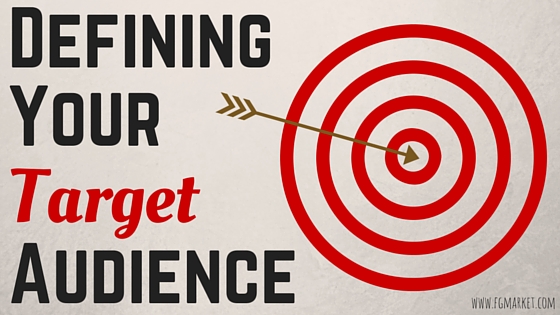When you’re a business owner, identifying who your target audience is can be one of the keys to your success. Known as defining your target audience, this tactic helps you understand what kinds of people, and what products, you need to be focusing on. This also gives you the who, what, when, where, and how of business; letting you know every aspect of your customers wants and needs.
Let’s face it: if you don’t know where your focus is, then how are you supposed to hit the mark? It’s like throwing darts at a board while blindfolded and facing the wrong direction. You’ll spend most of your time throwing darts at the good patrons in the bar, people who might not have any interest in your dart game. They’re just trying to enjoy their drink, man!
If that long-winded and slightly unnecessary metaphor sounds like your business, then check out these helpful tips on how you can begin defining your target audience.
Look at Current Customers
If you want to know how to define your target audience, you first need to look at your current audience. Pay attention to what types of customers shop at your business the most, or what products are used more than others. Are they younger? Older? Low-Income? High-Income? Male? Female? Find out what works, and then capitalize on that.
Check Out Your Competition
It’s always a good tactic to see what your closest market competition is doing right, and what they’re doing wrong. If you want to target the same audience as your competition, then observe what types of people shop at their business. Then, formulate a tactic to get those customers to come over to your business instead.
Figure Out Your Benefits
Every company has employees and products that offer certain benefits that can’t be found anywhere else. Whether that be a graphic designer who’s had past experience designing packaging for successful companies, or a product that offers something that only certain niches will be interested in, you always have benefits that can help you devise targeting tactics.
Get Specific With Defining
Don’t just define your target audience in broad strokes, such as “females” or “young.” Get more specific with that target audience, such as “female college students from low income families, who are interested in organic products.” This will help you target a specific demographic, and build your business around their needs.
Test It Out
Once you’ve defined your target audience, test your plan out on them! Much like the scientific method, after you ask a question, do research, and form a hypothesis, the next step has to be to test it out. You can then take what you learned from your test, analyze it, and discover if it worked, or what you can improve on for the next test.
Defining your target audience can take time and patience, but once you figure out who these important customers are, you can build your business around catering to their needs!


